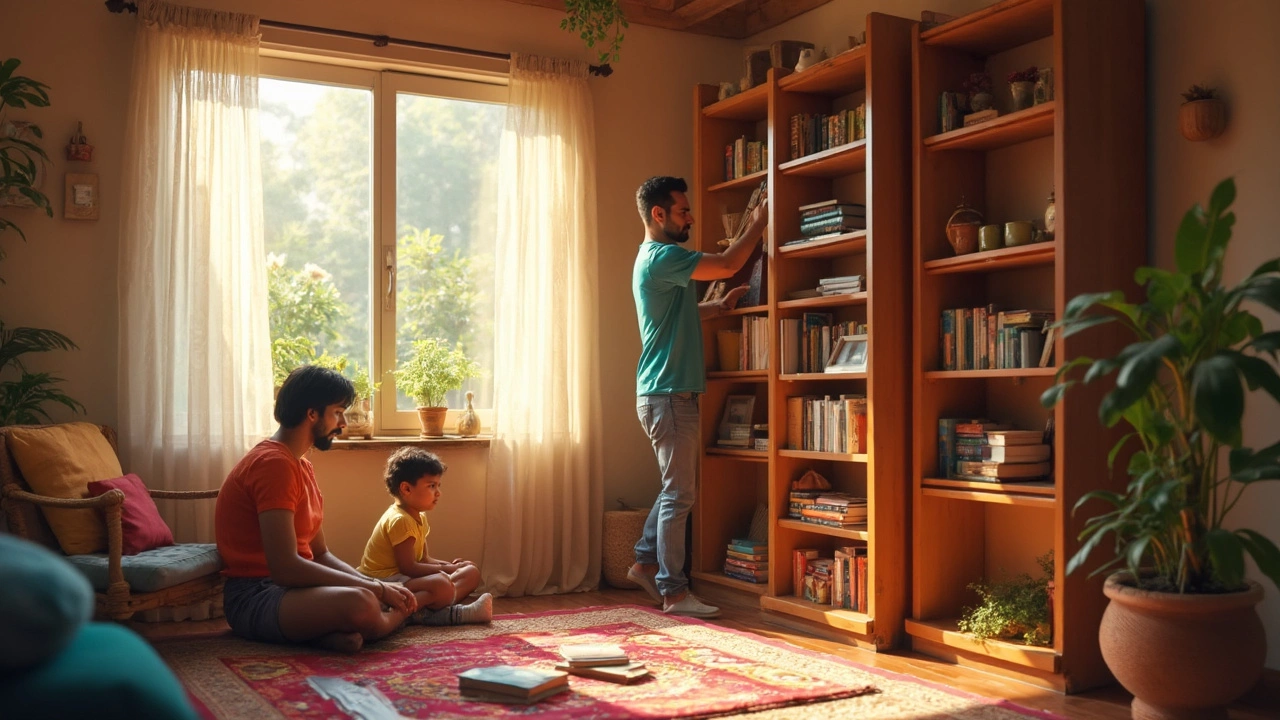Bookshelf Safety: Simple Steps to Stop Tip‑Overs and Protect Your Family
Ever walked past a tall bookshelf and felt a little uneasy? You’re not alone. Those sleek units look great, but without a few safety tweaks they can become a hazard, especially if you have kids or pets. The good news? Securing a bookshelf takes only a few minutes and a handful of tools.
Anchor It Right the First Time
The single most effective trick is to anchor the unit to the wall. Most modern bookshelves come with pre‑drilled holes for brackets—look for them on the back. Grab a stud finder, locate the studs, and use sturdy L‑brackets or the hardware that came with the shelf. If you can’t find a stud, use wall anchors rated for the shelf’s weight. Tighten the screws until the bracket feels solid; you’ll hear a firm click that tells you it’s good to go.
Distribute Weight Evenly
Even a properly anchored shelf can wobble if the load isn’t balanced. Start by placing the heaviest books on the bottom shelves, near the back where the wall provides extra support. Light items and decorative pieces belong on the top. Avoid stacking a pile of novels on one side—this creates a lever effect that can tip the whole unit. Spread the weight across the entire shelf surface for a stable, even feel.
If you’re short on space, consider using storage bins or baskets that sit on the lower shelves. They keep items contained and add a bit of friction, reducing the chance they’ll slide around when the shelf is bumped.
Another quick fix is to add a non‑slip pad under each foot of the bookshelf. Rubber or silicone pads give the base a little grip and protect the floor from scratches. They’re cheap, easy to swap out, and work well on hardwood, tile, or carpet.
For homes with active toddlers, think about installing a safety gate a few feet away from the bookshelf. It creates a buffer zone, giving kids a chance to notice the unit before they run into it. Combine this with a clear visual cue—like a brightly colored ribbon tied to the top edge—so they learn to stay back.
Regularly check the anchoring bolts, especially after moving heavy items onto the shelf. Screws can loosen over time, and a quick hand‑tighten can keep the shelf secure for years. If you notice any wobbling, it’s a sign to re‑inspect the brackets and the wall anchors.
Finally, keep the floor around the bookshelf clear. A clutter‑free space reduces tripping hazards and makes it easier to see if the shelf is sliding. A quick sweep each week helps maintain both safety and a tidy look.
By anchoring, balancing weight, and adding a few protective touches, you turn a stylish bookshelf into a sturdy, child‑friendly feature of your home. It’s a small effort that pays off big when accidents are avoided.
How to Stabilize a Freestanding Bookcase Fast
Tipping bookcases can be a real danger in homes, especially with kids or pets around. This guide breaks down the smart and practical steps to keep any freestanding bookcase sturdy and wobble-free. Learn about the best anchoring tricks, simple fixes, and common mistakes people make when stabilizing their bookshelves. These actionable tips will help make your book collection safer and your space look tidier. Don't risk a book avalanche—find out how to stabilize your shelves right away.





